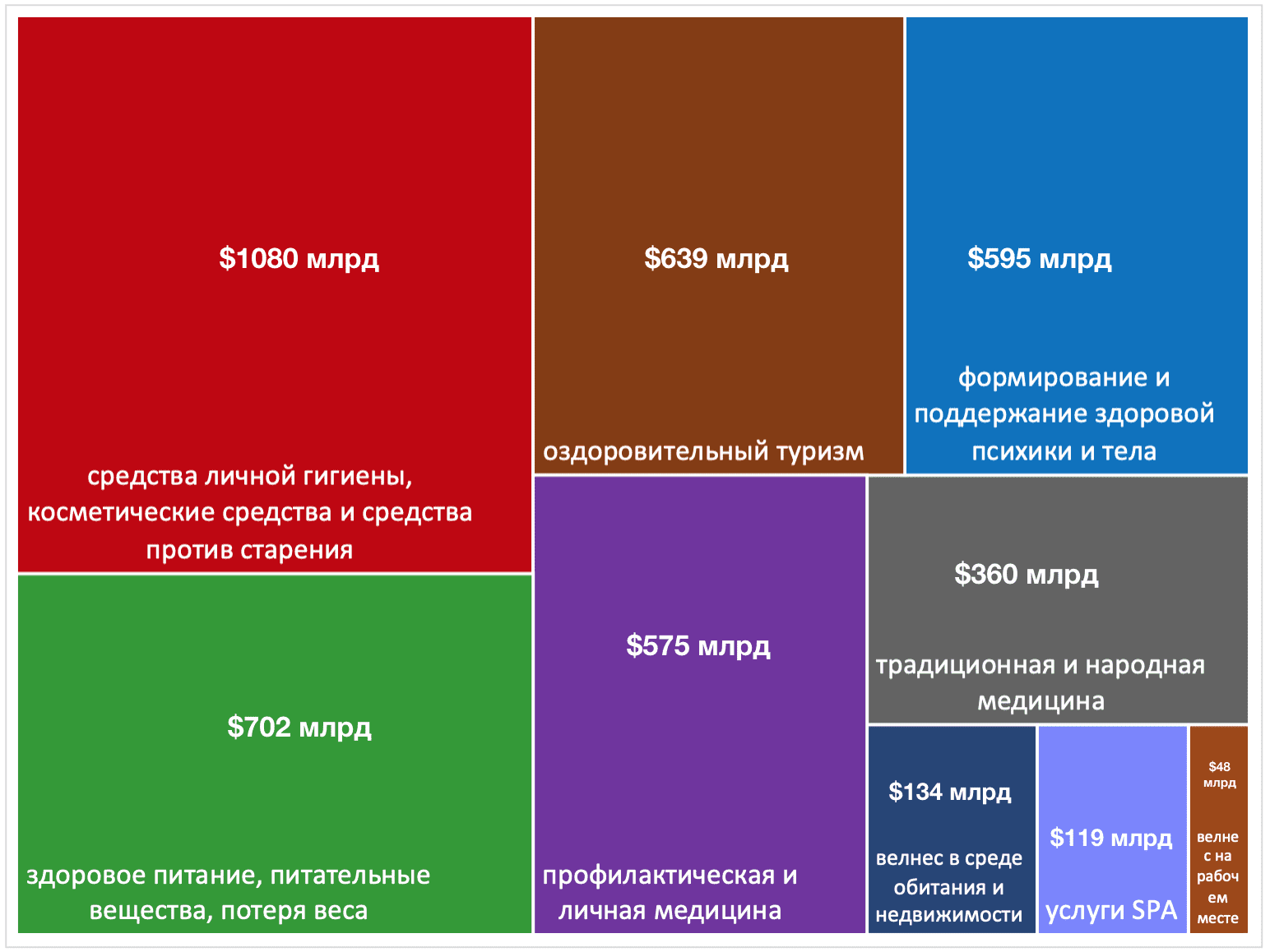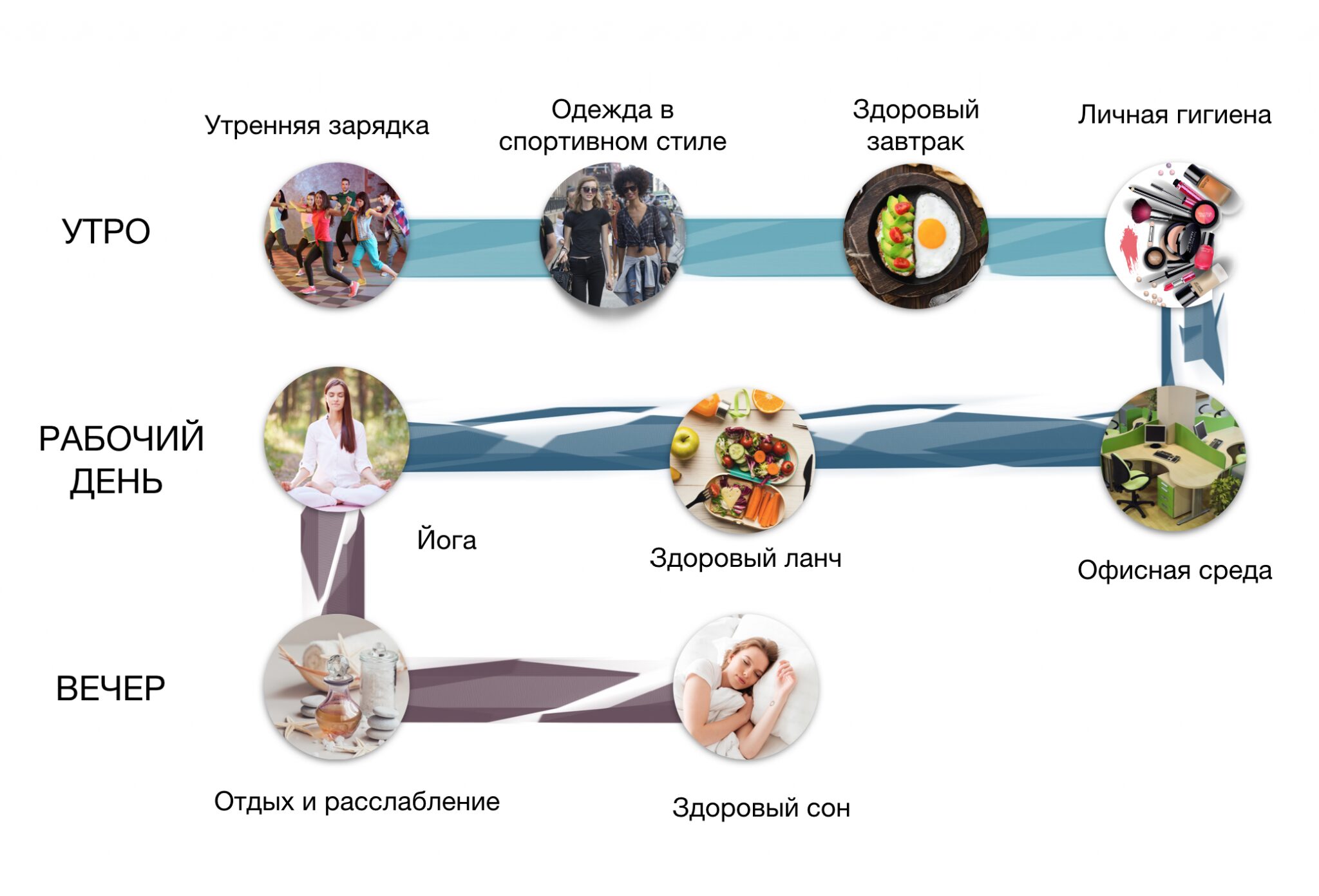Wellness is a great business opportunity

The wellness industry includes all areas of production of products and services that ensure health, longevity, beauty, performance - human well-being in all areas of his existence: spiritual, social and physical.
The global wellness industry is growing rapidly, reaching over $1.4 trillion in 2018. In comparison, the IT industry is expected to reach $1.4 trillion in 2019. It is quite possible that the wellness industry will overtake the latter in terms of turnover and growth.
The wellness industry presents great opportunities for developing a profitable business. Wellness products and services include:
- personal care, cosmetics and anti-aging products
- SPA services
- formation and maintenance of a healthy mind and body
- health tourism
- preventive and personal medicine
- healthy eating, nutrients, weight loss
- wellness in living environment and real estate
GLOBAL WELLNESS INDUSTRY TURNOVER, 2018

Source: Global Wellness Economy Monitor, October 2018
The environments in which we live, work and travel are critical but largely underappreciated factors in our health. It is the result of a complex interaction between genetic factors and numerous interrelated external determinants (eg, socioeconomic environment, our physical condition, access to health services). These external factors form a complex “health ecosystem” that can enhance or diminish the effects of our genes.
From recent research (Genes, Behavior, and the Social Environment: Moving Beyond the Nature/Nurture Debate. Washington, DC: The National Academies Press) it follows that genetics can determine only 10-15% of our health outcomes, while external and environmental factors environments play a much more important role. There is more and more evidence that our health and longevity are greatly affected by the environment in which we live, work and travel.
All nine wellness sectors are dynamic and interconnected. Consumers, in the face of longer life expectancies, rising rates of chronic disease, stress and poor environments, are rethinking how they view factors, products and services that improve their quality of life. Among the nine sectors of the wellness economy, three represent the critical, interconnected environments in which we live: residential and real estate wellness, workplace wellness, and wellness tourism. The remaining six wellness sectors do not operate independently of or outside of these areas. They are all important components of the “wellness ecosystem” that promotes healthy living and longevity. The consumer wellness journey can be depicted as follows. Let's take Svetlana, for example. In the morning she does physical exercises, changes into comfortable sports-style clothes, eats a healthy breakfast and applies natural cosmetics. She comes to the eco-friendly office, eats a healthy lunch in the afternoon, relieves stress in the evening with yoga classes, relaxes in the evening using relaxing cosmetics and goes to sleep on the right bed with an orthopedic mattress and pillow. In addition, she is planning a vacation at a health resort and is thinking about purchasing housing in an environmentally friendly area, built using smart home technologies.


The explosion of the wellness economy reflects these overlapping areas, along with a growing recognition of the critical impact of the external environment on our health and well-being. As such, we can expect increased convergence across all sectors of the wellness industry through acquisitions and mergers, partnerships, increased innovation across horizontal and vertical categories, and the emergence of new business models.
If you are interested in this industry, are thinking about starting your own wellness business and would like more information and advice, write to us
